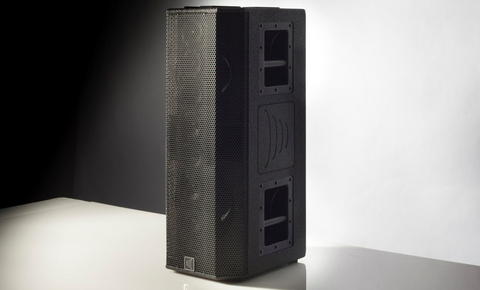-
Audio
-
Guitar
-
Bass
-
Blog
-
SALE
- Financing
- Support
- SINCE 1946
February 02, 2017

When trying to choose the best speaker system for your application you may find yourself confronted by a bewildering list of specifications. You might be thinking, "I just need to pick a speaker that is a good fit for my power amplifier. Why does this say 600 watts in one place and 2400 watts in another? What do all these numbers and unfamiliar words mean?" There seem to be a lot of variables to consider but what do they tell you about the system's capabilities? Let's take a look at some commonly published specifications you might encounter and become familiar with their meaning and application.
What kind of speaker do you need?
One of the first decisions you'll want to make is selecting a speaker that is suitable for the signal you want to put through your speaker. If you want a basic full-range speaker that can handle both highs and lows (for example a stand-alone PA speaker or a keyboard amplifier system) you need to be able to cover the full spectrum of frequencies. On the other hand if you want to amplify bass or low frequencies only (as you might do with a sub-woofer system) you only need to reproduce a particular range of frequencies. The specification that tells you the range the system can reproduce efficiently is called Frequency Response. Often it will look something like this:
Frequency Response: 54 Hz – 20 kHz (-10dB)
Frequency refers to the speed at which the sound wave cycles. Slower frequencies produce lower notes (bass). The faster the wave cycles the higher the tone will sound (treble). In the spec above we are provided the lowest and highest frequencies the system reproduces effectively, so the low end covers down to 54 Hz (Hz or Hertz is a measurement of cycles per second) and the high end extends up to 20 kHz (kilohertz which refers to how many thousands of cycles per second). It is important to note that the speaker doesn't simply cut off the sound above and below these limits, but rather the limit indicates the frequency where the sound level produced drops below a certain threshold. Our sample specification notes (-10dB). Past that point the system will still produce sound, but the output sound level (volume) will continue to be lowered. At some point the system will not be useful going lower and putting high power at these frequencies far below specification can get into damaging the speaker. High end products may use more rigid guidelines for what they consider too low, so when comparing systems be sure you take the variations into account.
Sensitivity (1w @ 1m): 100dB
Another important specification to check is Sensitivity. What this tells you is how much sound pressure level, or SPL, the speaker can produce given a specified input signal level and at a specified distance from the speaker. This tells you how efficient it is. A speaker with a higher sensitivity will give you a higher output level from the same signal input, so you can get more volume out of the same amplifier with a high efficiency speaker. This is measured in decibels. In our sample spec the system yields 100dB from a 1 watt signal at a distance of 1 meter.
The sensitivity is also tied into the frequency response. The average level of the frequency response is the sensitivity, and the ends of the frequency response correspond to the amount down from the sensitivity. In our case the -10dB down from the 100dB would be the level at the ends. Our example system should be close to 90dB at 54Hz.
Maximum SPL: 128dB Cont/ 131dB Prog / 134dB Peak
Here we use the term “SPL” in the specification. This is the maximum SPL output the speaker can produce and remain within the rated specs for frequency response and power handling. How loud can this thing get? Notice, there are three different specs: Cont (continuous power), Prog (program power) and Peak power, which we'll explain in the next section.
Part 2 of this series will cover Power Ratings, multi-way crossover systems and coverage specs.
November 11, 2025
"This Is An Underrated Sound System!" DJ Tech Tips reviews the Carvin Audio TRC400A 4000W Powered Column Array System in this video.
October 13, 2025
Carvin TRC Active Column Array System features and setup video. Watch this video to discover the features and benefits of our active column array sound system. TRC Powered Column Array Systems offer portability with high SPL levels that project up to 400’ with exceptional clarity. Unsurpassed high frequency and deep bass response will place the audience in the center of your performance. TRC Systems are scalable and are available in 2000W, 4000W, and 8000W models.
June 18, 2025
Carvin Audio teams up with Red Bull to provide audio for the VIP experience in Des Moines for the 2025 Soap Box Race Iowa. The TRC Active Column Array System was used for the event.
Sign up to get the latest on sales, new releases and more…
NoFraud Frequently Asked Questions
"Make a joyful noise unto the Lord all of the earth; make a loud noise and rejoice and sing praises. Sing to the Lord with the harp and the voice of the psalm." - Psalm 98:4-5
© 2025 Carvin Audio.
Carvin Corp.
POS and Ecommerce by Shopify
